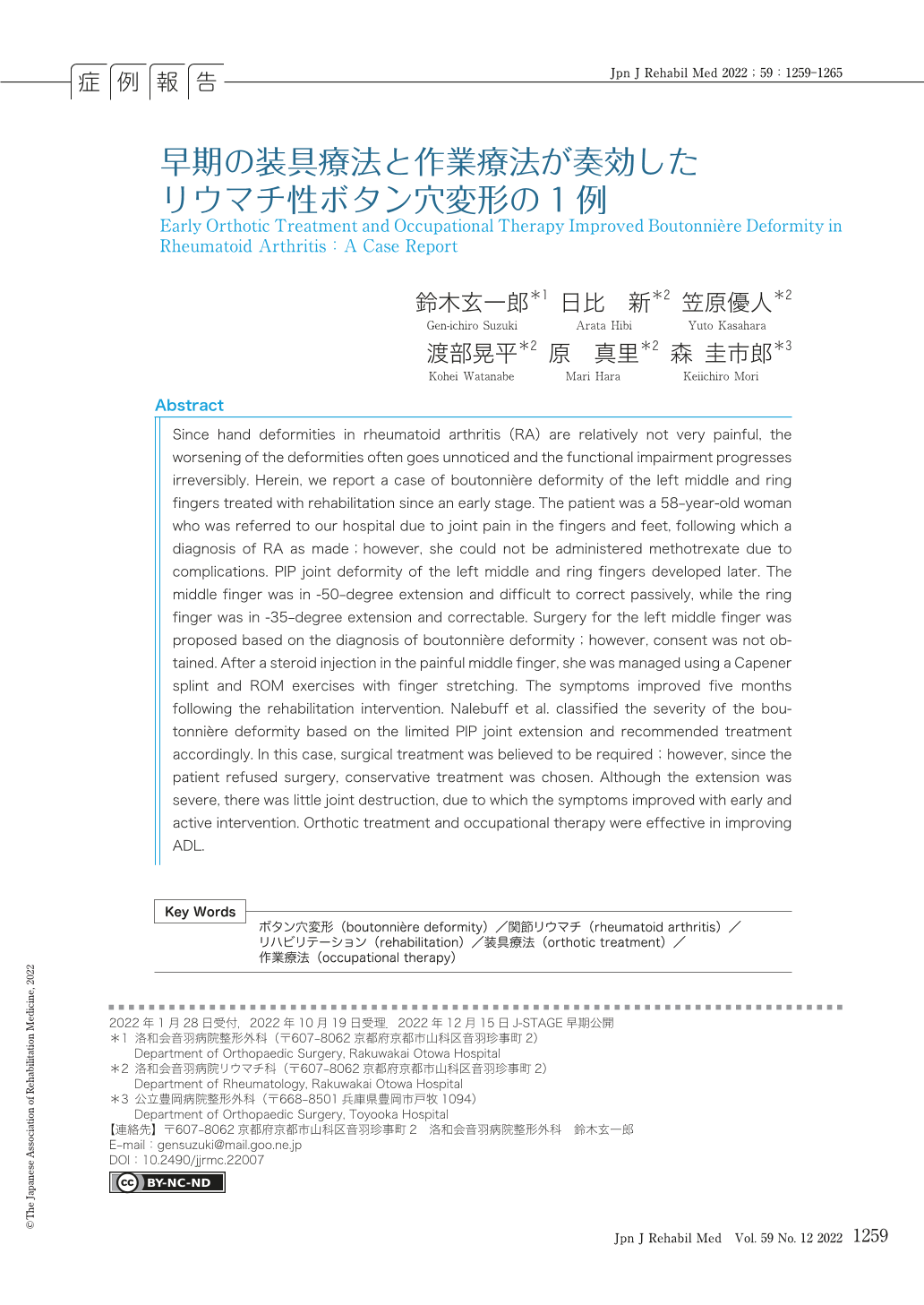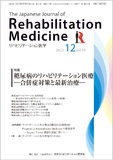Japanese
English
- 販売していません
- Abstract 文献概要
- 1ページ目 Look Inside
- 参考文献 Reference
はじめに
近年,生物学的製剤などの薬物療法の進歩や早期からの治療によって関節リウマチ(rheumatoid arthritis:RA)の疾患活動性の改善が得られるようになり1),その結果RA関連の手術,特に人工股関節全置換術や人工膝関節全置換術は減少した.一方で手指や足趾の手術は減少しておらず2),RAの治療を考えるうえで手指などの小関節の機能維持にも配慮が必要であることが報告されている3).手指変形をきたしても疼痛は比較的少ないため治療がなされないことも多く4, 5),変形や機能障害が不可逆的に進行してしまうため,早期からの治療が肝要である5, 6).今回,われわれは手術を希望しなかったRAのボタン穴変形に対して早期から装具および作業療法を行い症状が改善した1例を経験したので報告する.
Abstract
Since hand deformities in rheumatoid arthritis (RA) are relatively not very painful, the worsening of the deformities often goes unnoticed and the functional impairment progresses irreversibly. Herein, we report a case of boutonnière deformity of the left middle and ring fingers treated with rehabilitation since an early stage. The patient was a 58-year-old woman who was referred to our hospital due to joint pain in the fingers and feet, following which a diagnosis of RA as made;however, she could not be administered methotrexate due to complications. PIP joint deformity of the left middle and ring fingers developed later. The middle finger was in -50-degree extension and difficult to correct passively, while the ring finger was in -35-degree extension and correctable. Surgery for the left middle finger was proposed based on the diagnosis of boutonnière deformity;however, consent was not obtained. After a steroid injection in the painful middle finger, she was managed using a Capener splint and ROM exercises with finger stretching. The symptoms improved five months following the rehabilitation intervention. Nalebuff et al. classified the severity of the boutonnière deformity based on the limited PIP joint extension and recommended treatment accordingly. In this case, surgical treatment was believed to be required;however, since the patient refused surgery, conservative treatment was chosen. Although the extension was severe, there was little joint destruction, due to which the symptoms improved with early and active intervention. Orthotic treatment and occupational therapy were effective in improving ADL.

Copyright © 2022, The Japanese Association of Rehabilitation Medicine. All rights reserved.


